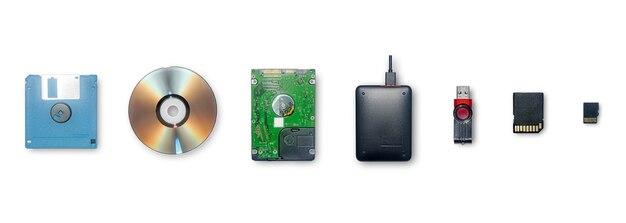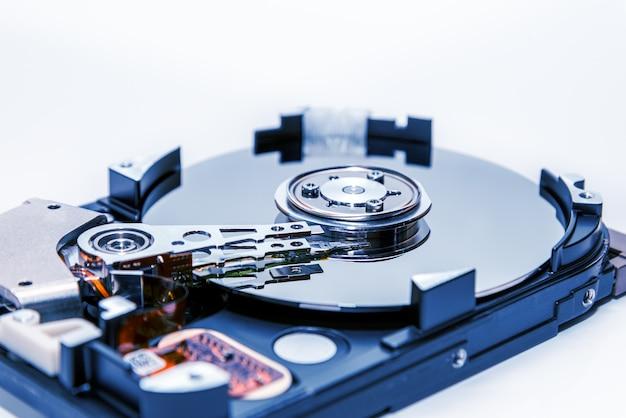In today’s digital age, storage devices play a crucial role in keeping our data safe and accessible. From personal photos and videos to important documents and files, our reliance on storage devices has only grown over the years. But have you ever wondered what exactly a storage device is and what functions it serves?
In this blog post, we will delve into the world of storage devices, exploring their different types, functions, and importance in our daily lives. We will discuss primary storage devices like RAM and ROM, as well as secondary storage devices that provide us with additional space to store our data. Furthermore, we will explore how storage devices are classified and the significance of memory and storage in our technological ecosystem.
So, if you’re curious about the ins and outs of storage devices and their functions, grab a cup of coffee and let’s dive into this informative and captivating journey together!

What is a Storage Device and the Functions it Performs
Storage devices are the unsung heroes of our digital world. They may not have capes or superpowers, but they play a crucial role in our everyday lives. So, what exactly is a storage device, and what functions does it perform? Let’s dive into the fascinating world of data storage and find out!
The Basics of Storage Devices
At its core, a storage device is a piece of hardware that is used to store and retrieve digital information. It acts as a virtual “warehouse” where data can be stored and accessed later. From personal files to vast databases, storage devices provide us with the means to preserve and manage our ever-growing digital footprint.
Different Types of Storage Devices
Storage devices come in various shapes, sizes, and technologies. Some common storage devices include hard disk drives (HDDs), solid-state drives (SSDs), USB flash drives, memory cards, and optical discs. Each type has its own unique characteristics and functions, catering to different needs and preferences.
Hard Disk Drives (HDDs)
HDDs, often found in desktop computers and external drives, are like the workhorses of the storage realm. With their spinning platters and moving read/write heads, they provide ample storage space at an affordable price. However, they can be a bit slow compared to their flash-based counterparts.
Solid-State Drives (SSDs)
SSDs are the sleek and speedy superheroes of storage devices. They use flash memory technology to store data, resulting in lightning-fast read and write speeds. From laptops to gaming consoles, SSDs have become increasingly popular due to their impressive performance and reliability. Plus, they don’t have any moving parts, making them more durable and energy-efficient.
USB Flash Drives and Memory Cards
When it comes to portable storage, USB flash drives and memory cards are the go-to options. These pint-sized powerhouses can hold a significant amount of data and can be easily plugged into computers, smartphones, cameras, and other devices. They are perfect for carrying files on the go and transferring data between different devices.
Optical Discs
Remember those shiny CDs and DVDs that were all the rage a decade ago? They are still relevant today, especially for long-term archiving purposes. While not as commonly used as before, optical discs offer a reliable way to store large amounts of data. Plus, they have the added advantage of being resistant to data corruption and degradation over time.
Functions of Storage Devices
Storage devices don’t just sit idle – they perform a plethora of functions to ensure our data remains safe, secure, and easily accessible. Here are some of the key functions they serve:
Data Storage
The primary function of a storage device is, of course, to store data. It provides a physical space where all our digital files, documents, photos, videos, and everything else can reside. Whether it’s a single device or a network-attached storage (NAS) system, storage devices offer a seemingly infinite capacity to house our precious information.
Data Organization
Imagine if all your files were just jumbled messily together, with no rhyme or reason. That would be chaos! Luckily, storage devices also help organize our data. We can create folders, directories, and hierarchies to structure our files in a logical manner. This ensures easy navigation and efficient searching, putting an end to the scavenger hunt for that elusive document.
Data Retrieval
Just like a librarian retrieving a book from a shelf, storage devices allow us to fetch our data whenever we need it. With a few clicks or taps, we can access our files instantaneously. Whether it’s a baby picture or a business presentation, storage devices ensure our data is readily available at our fingertips.
Data Backup
The thought of losing all our data is enough to send shivers down our spines. That’s where the backup function of storage devices comes into play. By making copies of our important files and storing them in a separate location, we can safeguard against accidental deletion, hardware failure, or even a catastrophic event. Remember, backups are like digital superheroes, ready to save the day when disaster strikes!
Data Transfer
We live in a world of sharing, collaboration, and connectivity. Storage devices enable us to transfer data between devices seamlessly. Whether it’s transferring files between a computer and a smartphone or sharing documents with colleagues, storage devices act as the intermediaries, ensuring our data reaches its intended destination.
In conclusion, storage devices are the unsung heroes that silently preserve our digital lives. From storing and organizing our data to ensuring its accessibility and safety, these devices perform a range of functions vital to our digital existence. Whether you’re using an HDD, SSD, USB drive, or any other type of storage device, take a moment to appreciate the important role they play in our daily lives. So, the next time you save a document or back up your photos, give a nod of appreciation to these humble but indispensable companions.

FAQ: Storage Devices and Their Functions
What are the Different Types of Data Storage
Data storage can be classified into two main types: primary storage and secondary storage. Primary storage, also known as main memory, is used to store data that is actively being accessed by the computer. This includes random access memory (RAM) and cache memory. On the other hand, secondary storage refers to devices that store data for long-term use, such as hard disk drives (HDDs) and solid-state drives (SSDs).
What are Some Common Storage Devices
There are six common storage devices used in modern computing:
-
Hard Disk Drives (HDDs): These devices use magnetism to store data on rotating disks called platters. They offer high-capacity storage at an affordable price.
-
Solid-State Drives (SSDs): SSDs use flash memory to store data electronically. They are faster, more durable, and more energy-efficient than HDDs, making them ideal for performance-oriented applications.
-
USB Flash Drives: Also known as thumb drives or pen drives, these portable storage devices use flash memory to store data. They are convenient for transferring files between computers.
-
Memory Cards: Commonly used in digital cameras, smartphones, and other portable devices, memory cards provide additional storage capacity. They come in various formats, including SD cards and microSD cards.
-
Optical Disc Drives: These devices, such as CD/DVD drives, use lasers to read and write data on optical discs. Although less common nowadays, they are still used for storing and playing multimedia content.
-
Cloud Storage: This type of storage relies on remote servers accessed over the internet to store and retrieve data. Services like Google Drive and Dropbox allow users to store files securely and access them from any device with an internet connection.
What are the Uses of RAM and ROM
-
RAM (Random Access Memory): RAM is a type of volatile memory that stores data that is actively being used by the computer. It allows for quick access to data, enabling faster processing speed. The more RAM a computer has, the better its multitasking capabilities and overall performance.
-
ROM (Read-Only Memory): Unlike RAM, ROM is non-volatile memory that contains permanent instructions or data that cannot be modified or erased. It stores firmware, BIOS, and other essential system instructions.
What are the Functions of Secondary Storage Devices
Secondary storage devices serve several important functions:
-
Data Persistence: Secondary storage devices provide a means to store data for long periods, even when the computer is turned off. This ensures data permanence and allows for data recovery in case of system failures.
-
Expanded Storage Capacity: Secondary storage devices offer much larger storage capacities compared to primary storage devices like RAM. This allows users to store vast amounts of data such as documents, photos, videos, and applications.
-
Data Backup and Recovery: By regularly backing up data on secondary storage devices, users can protect against data loss. These devices enable easy recovery of data in case of accidental deletion, hardware failure, or software corruption.
-
Seamless Data Transfer: Secondary storage devices facilitate the transfer of data between different systems. For example, external hard drives and USB flash drives allow users to copy files from one computer to another or share files with colleagues.
How are Storage Devices Classified
Storage devices can be classified based on various criteria, including:
-
Access Method: Storage devices are categorized as either sequential access or random access. Sequential access involves accessing data in a linear or sequential manner, like reading from a magnetic tape. Random access allows for direct access to any location, like with hard disk drives.
-
Nature of Data: Storage devices can be classified as either volatile or non-volatile. Volatile storage loses its data once the power is turned off, like RAM. Non-volatile storage retains its data even when power is removed, like hard disk drives.
-
Physical Form: Storage devices come in various physical forms, such as solid-state devices, magnetic devices, or optical devices.
What is a Storage Device
A storage device refers to any hardware component or device that can store, retrieve, and manage data in a computing system. It provides the means to preserve data, programs, and applications, both temporarily and permanently.
What is a Primary Storage Device
A primary storage device, also known as main memory, is responsible for holding data that the CPU currently needs to access. This includes RAM, cache memory, and CPU registers. Primary storage devices provide fast access to data, enabling efficient execution of programs and tasks.
What are the Different Types of Storage Devices
There are three main types of storage devices:
-
Primary Storage Devices: These devices, such as RAM and cache memory, offer fast access to frequently used data and instructions.
-
Secondary Storage Devices: Secondary storage devices, like hard disk drives and solid-state drives, provide long-term storage and larger capacities.
-
Tertiary Storage Devices: Tertiary storage devices, such as magnetic tape drives, are used for archival storage and are typically slower but offer high-capacity storage.
How Important are Memory and Storage Devices
Memory and storage devices play a crucial role in the performance and functionality of a computer system. RAM and cache memory allow for quick access to data, enhancing system responsiveness. Secondary storage devices provide ample storage capacity for personal files, software applications, and operating systems. Without memory and storage devices, computers would not be able to function effectively or retain data for future use.
Is RAM Memory or Storage
RAM (Random Access Memory) is a type of memory and should not be confused with storage devices. While RAM provides temporary storage for data that the CPU is actively processing, it does not retain data once the computer is powered off. Storage devices like hard disk drives and solid-state drives, on the other hand, provide long-term storage even when the power is turned off. So, while RAM is a critical component for system performance, it is not considered storage in a traditional sense.
